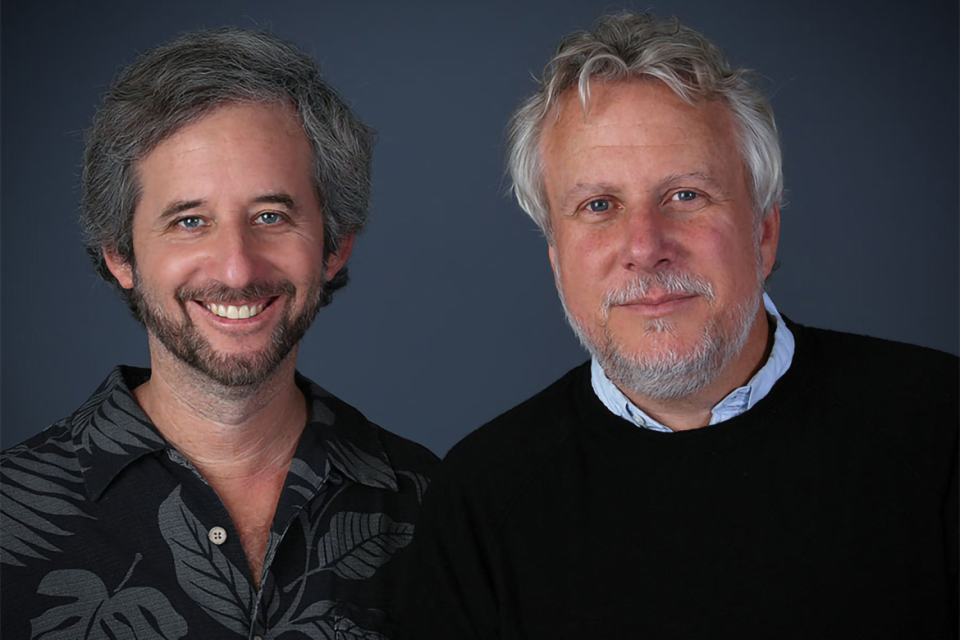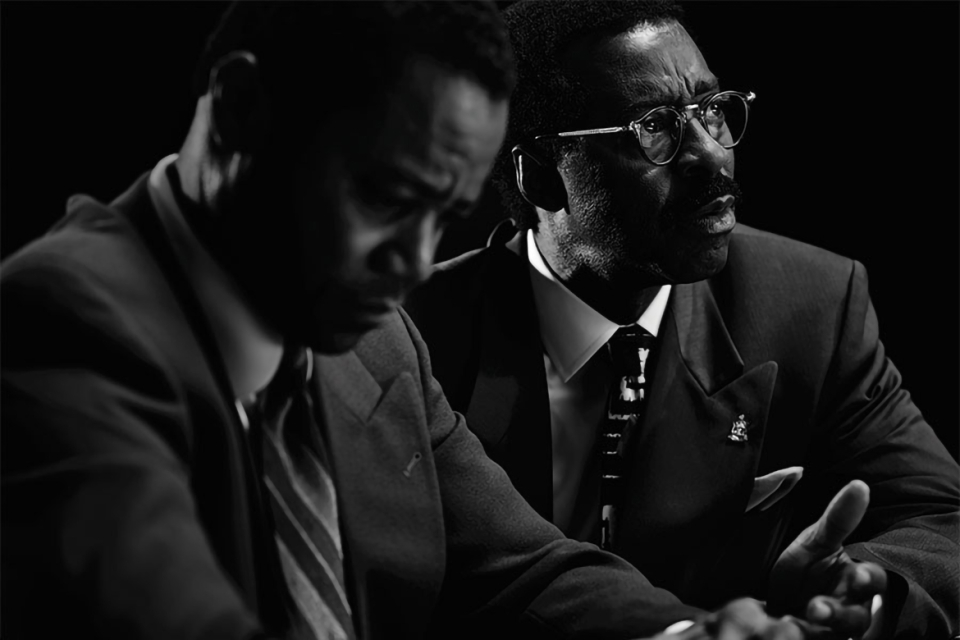Scott Alexander and Larry Karaszewski figure that for the past three years, they've been the worst dinner party guests in Los Angeles.
That's because the award-winning writers of films like The People vs. Larry Flynt, Man on the Moon, Big Eyes and Ed Wood opted to develop FX's new limited series, The People v. 0.J. Simpson: American Crime Story.
"Whenever we'd go out, people would eventually ask what we were working on, and all conversation just stopped when we told them," Alexander explains. "O.J. would be all anyone wanted to talk about. Everyone has a personal connection, remembers where they were."
Emmy contributor Craig Tomashoff spoke with Alexander and Karaszewski (who executive-produce the series with Ryan Murphy, Nina Jacobson, Brad Simpson and Brad Falchuk) about revisiting the infamous Simpson case and the surprising things they discovered while turning the real-life drama that unfolded on TV into a 10-part TV drama.
So, what were your personal connections to the O.J. trial?
Larry Karaszewski: I grew up in Brentwood, so I remember O.J. Simpson as one of those celebrities you'd see at the grocery store, smiling and taking photos with people.
Scott Alexander: I'll never forget the day of the Bronco chase. We were working on a project in some crappy building half a mile or so from Disney. We'd heard that O.J. was on the loose and the Bronco was spotted.
The only TV in the building that worked was in the lobby, and half the people in the building surrounded this black-and-white television with rabbit ears to watch what was happening.
Did you learn anything about the case that you'd never known before?
LK: There was so much we had either forgotten or never knew in the first place. For instance, I never knew that right after the murders, they stashed O.J. at the Kardashians' house. And I didn't know about the conversation he had with police during the Bronco chase. Also, we have a whole episode about the jurors and their life in the hotel — I don't think anyone knew what that was like.
This is a subject that everyone has strong feelings about. What made you want to tackle it?
LK: It presented a great canvas that excited us, It's a fascinating topic, one that you couldn't do in a two-hour movie. You need time to explore all the offshoots, and this format allowed us to explore the why and the what with the people involved, really seeing what was going on in their lives,
SA: We did have trepidation at first — had it been too soon or too long since it all happened? But after the past three years, with all the police shootings that have happened, this feels torn out of the headlines again. We felt we could write something that mattered in 2016.
We could talk about some big ideas, such as the trial being the beginning of reality TV. Here was someone like Faye Resnick [a friend of the murdered Nicole Brown Simpson], who became famous for what reason exactly? I tried to explain to my kids what a superstar Kato Kaelin was and they said, "Why? He just lived in someone's backyard."
LK: There's also the story of racial relations with the LAPD. And we have an episode showing how [prosecutor] Marcia Clark was held to a different standard [because of her sex]. She was criticized for her haircut. She had the nightmare of juggling her personal and professional life, a working mom who can't get home to have dinner with her kids. O.J. also represented the beginning of the 24-hour news cycle.
Did anything you learned change your opinions about the case?
SA: We didn't want to retry 0J. Simpson. Everybody's made up their minds. We just wanted to look at why the verdict came out the way it did.
For more on The People v. 0.J, Simpson: American Crime Story, see our Online Original story, "Living History."












